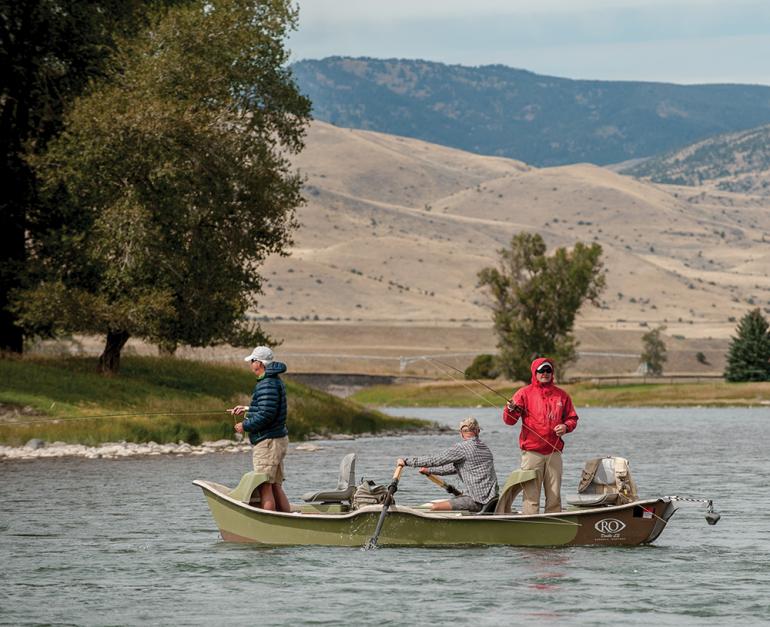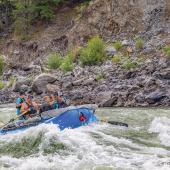Make Mine a McKenzie
Getting suited for the proper vessel.
A watercraft of any kind can benefit the angling experience in numerous ways. If fish are rising beyond casting range, you can reach them. You can travel miles of productive water that would otherwise be inaccessible. And if the fish aren’t cooperating, floating a Montana river on a hot summer day can still provide an enjoyable social, scenic experience, especially if the ice chest contains plenty of cold beer.
There are all kinds of craft for all kinds of fishing, but which vessel should a newcomer to fly-fishing pick for navigating Montana waterways? The first choice one needs to make is between a craft with a solid hull (boat) or an inflatable one (raft). Both have advantages and disadvantages. I had plenty of experience with inflatables in Alaska, where reaching most good water requires travel by air. You can’t put a drift boat in a bush plane. But as much as I enjoyed those long wilderness floats, all that time spent in rafts served only to reaffirm my longstanding partiality to boats of a specific design—McKenzie River boats, otherwise known simply as driftboats.
I practically grew up at the oars of a McKenzie River boat, and it’s still the most popular design among Montana anglers today. In spring, their distinctive rockered profiles appear in swarms on countless boat trailers, traveling along every waterway in southwest Montana like some long-slumbering species emerging from hibernation. McKenzie River boats evolved from dories in Oregon nearly a hundred years ago to facilitate running whitewater. They have wide bottoms, flared sides, narrow sterns, and—their most distinctive feature—a hull that curves from bow to stern, rising high at both ends.
This ingenious design enables precise maneuvering around obstacles and through complex currents. Compared to conventional boats of the same size (most models range from 12 to 16 feet in length), relatively little of the hull is in contact with the water. Propulsion and control are provided by oars located over the center of gravity. This allows the rower to spin the boat completely around with a single stroke in calm water. Running rapids becomes a game of Pac-Man, the oarsman deploying short strokes to quickly pull the craft around obstructions.
Unless you’re trying to make time in dead water, driftboats are rowed backwards against the current with the bow pointed downstream. This may be counter-intuitive for those accustomed to other watercraft, and there’s a bit of a learning curve. Having spent early childhood paddling canoes, I promptly put us on top of a rock the first time I took the oars of a drift boat. Start out in Class I water under the guidance of an experienced friend. The trick is to envision what the current would do with the boat if you did nothing, and then correct well ahead of time with short strokes, pointing the stern in the direction you want to deviate from the current
The original McKenzies were made of wood, and I still have a soft spot in my heart for those old classics. Aesthetics were exchanged for practicality with the arrival of fiberglass hulls, making drift boats lighter and more durable. Early models were bare-bones affairs—I had one of the first Lavros to roll off the line, and with a buddy’s help, I could launch it anywhere. Nowadays, many driftboats designed for anglers come equipped with seats fore and aft, storage compartments, and other amenities that add comfort and convenience at the cost of increased weight and decreased maneuverability. But whatever your Montana fishing needs, you can’t go wrong with a McKenzie.
Don Thomas has been fly-fishing for over 60 years and writing about it for almost as long. He currently lives in Lewistown with his wife Lori and their bird dogs.












